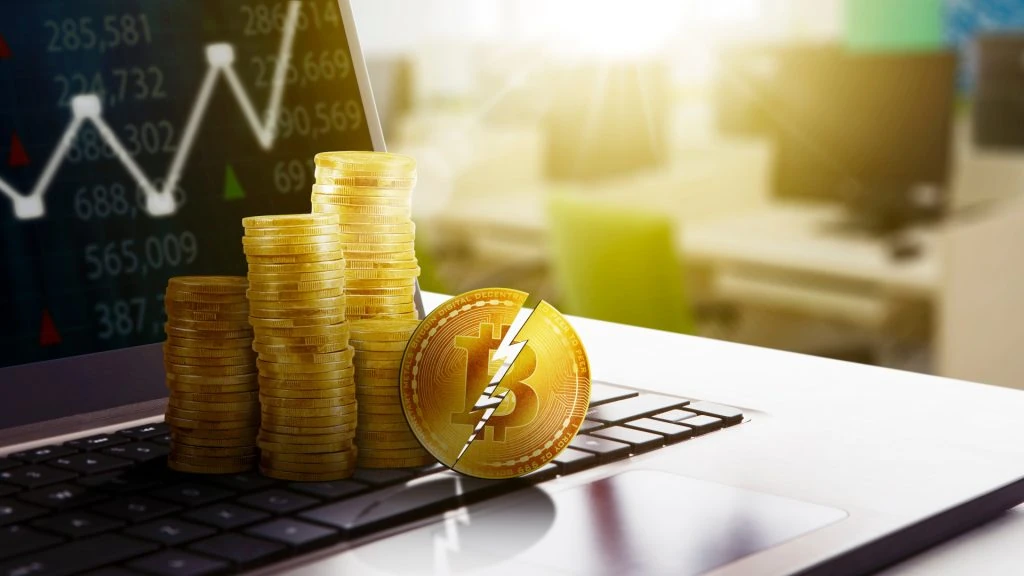The most recent Bitcoin halving took place in April 2024. It was the fourth halving since the cryptocurrency was created, as it takes place every four years. The reward that miners receive for creating Bitcoins (BTC) is halved. The value therefore continues to move towards 0. What does this mean for the miners?
What impact does halving have on the crypto industry? And what advantages and disadvantages does it bring?
The current situation on the market
We are currently experiencing a bull market in the crypto sector. Normally, this is only expected after the halving, but this time it is already happening before. The trigger for this is the recently released spot ETFs of Bitcoin. An ETF is an exchange-traded fund and spot means that the coins can be purchased at the current price. Spot ETFs therefore enable direct investment in bitcoins. And without having to deal with blockchain technology or the storage of cryptocurrencies. Spot ETFs are therefore not only popular with crypto enthusiasts, but also with traditional investors. As a result, Bitcoin is made accessible to a larger target group. Following the success of Bitcoin ETFs, other cryptocurrencies want to follow suit. A spot ETF for Ethereum is currently under discussion.
The appearance of these Bitcoin ETFs was reflected in rising prices, as this was accompanied by increased demand. The price is therefore currently continuing to move upwards, which is likely to continue. This may be due not only to the spot ETFs but also to the upcoming halving.
What happens during halving
The next Bitcoin Halving is expected to take place on April 20. The Bitcoin blockchain works according to the proof-of-work concept. This means that various miners mine the Bitcoin blocks and attach them to the blockchain. They use the power of their computers and servers to do this. For each successfully attached block, they receive a so-called reward, which is issued in Bitcoin. The value of the reward is currently 6.25 Bitcoin. With halving, this reward will be halved and miners will only receive 3.125 BTC per block mined.
In 2012 – four years after Bitcoin was created – the first halving took place. At that time, the reward price changed from 50 to 25 Bitcoin. Then in 2016 to 12.5 and in 2020 to 6.25 – the current price. It shows that it is continuing to move towards 0 and that miners will no longer receive any rewards at some point. This will be the case in 2140, when the fixed Bitcoin number of 21 million will be reached. From the halving in 2140, miners will then only receive the transaction fees, but no more rewards.
What this means for miners
As the value of the reward decreases, miners receive fewer bitcoins and therefore less income. So it has a big impact on them, but also on mining companies. Miners could quit after halving and look for another source of income and companies could disappear. For the remaining miners, this means more work and more pressure; they are forced to increase their efficiency.
However, miners will still be needed after the last halving in 2140. Their work only partly consists of mining the Bitcoin blocks. They are also responsible for validating and confirming transactions. And this area of responsibility will remain the same after 2140. There will simply be no production of new coins.
The advantages and disadvantages
Halving has a few advantages and disadvantages. For miners, income is reduced, which is why halving is a disadvantage for all miners and mining companies. They also have to contend with higher energy prices, which does not make the situation any easier for them.
As already mentioned, a bull market has always set in after the halving in the past. During these periods, Bitcoin prices shot up. This was the perfect opportunity to sell their bitcoins, especially for investors who wanted to get out.
This year, there is a bull market weeks before the halving. Nevertheless, it can be assumed that prices will continue to rise after the halving. From the day after the halving, the supply decreases due to the falling number of miners. As there are fewer miners, fewer Bitcoin will be created. If demand remains the same, this will result in a higher price. The price is currently around 60,000 euros. Although the price fell again slightly in mid-March, a further increase is to be expected – at the latest after the halving.
Summary
The halving took place on April 20th. On this day, the reward for miners will be halved from 6.25 to 3.125 BTC. Their income will be reduced, making the halving a disadvantage for all miners and mining companies. For investors, on the other hand, it is an advantage, as it is particularly easy to sell in the period after the halving. The past has shown that a bull market is established immediately after the halving. Supply falls and demand remains the same, causing the price to rise. Although we are already dealing with a bull market this year after the halving due to the new spot ETFs, a further price increase can be expected.







